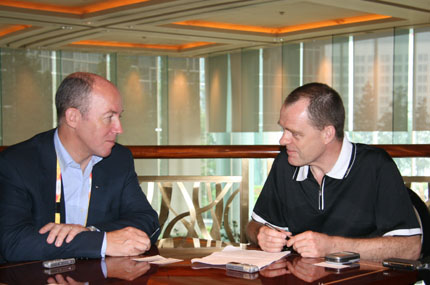In the early 1980s, the Olympic Movement was plumbing the depths of crisis. Since 1972, when 11 members of the Israeli team were killed by Palestinian terrorists, the Games had been a focus for international political strife. A boycott in 1976 in Montreal, when 17 African countries withdrew in protest against New Zealand's continuing sporting links with South Africa, was followed by a more aggressive anti-Soviet boycott of Moscow in 1980, and an inevitable retaliation against Los Angeles in 1984.
Financially, the picture was no better. The cost of the Montreal Games in 1976 ballooned from an original estimate of US$300 million to over US$1 billion. The debt has only just been cleared by the city at a final cost of around US$2 billion. The Los Angeles Games were delivered by a private consortium because no city authority would bid for them.
When Juan Samaranch was elected to the Presidency of the IOC in 1980, the organization had only US$200,000 in cash, and almost all its revenues were diverted to the Organizing Committees of the forthcoming Summer and Winter Games to help to offset some of the costs.
|

|
|
Michael Payne (L) is talking with China.org.cn reporter David Ferguson.
|
It was in this context that Michael Payne, along with a small team of colleagues, was drafted in to rebuild the commercial structure of the Olympics. They were part of a team from a newly-launched company in what was then the fledgling industry of sports marketing. Shortly afterwards Payne was appointed the IOC's first ever Marketing Director, the start of a relationship that has continued to the present day. He has worked with every one of the marketing managers of each of the Games Organizing Committees since then.
Together their achievement has been to transform the Olympics from a limping mule to a thoroughbred racehorse, and one of the principal tools in that transformation has been the creation and development of TOP - The Olympic Partner Programme. The results of the Programme have been dramatic: by 2008, global broadcasting revenues for the Games had risen thirty-fold in comparison to the 1980s to around US$3 billion, while the first sponsor alone for the Vancouver Winter Olympics in 2010 paid US$150 million, nearly triple the total amount raised for the 1980 Lake Placid Games from over 200 sponsors. Sponsorship now amounts to around 40 percent of the total revenues from the Games.
The Olympics are subjected to relentless criticism for what is perceived as a 'sell-out' to the commercial interests of its sponsors. The truth is that the IOC has fought hard to maintain the dignity of the Games, and applies a rigorous set of rules in terms of what is permissible.
Payne says, ''When you are responsible for managing the overall presentation, image, and brand of the Olympics it is vital to understand what makes the Games special and why they are so much more than just another sports event - why is that flame so symbolic. We spent time understanding what it is that makes the Olympics unique and we set some standards on which we operate a policy of zero tolerance - for example the rule on no advertising in the stadiums or on the athletes.
''In the early 80s everyone said you must put advertising in the stadium - that's how sports events generate income. We simply said no - we're not going to do that. We defined what our product was and then we sold it - we didn't sell it first and then ask our sponsors what they wanted it to be.''